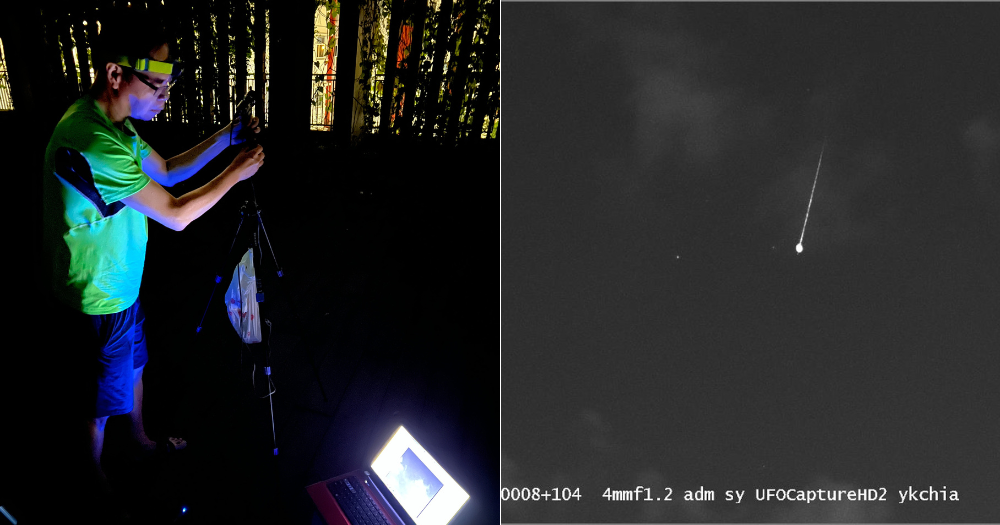Singapore and a starry night are not two things you would commonly associate together.
While I have memory from my younger years of seeing constellations like Orion's belt from my estate, those sights have since faded away against the backdrop of development.
As new condos and estates went up, so did obstructed views and light pollution.
A 2016 study found Singapore to be the most light polluted country in the world, where 100 per cent of the population lives under skies so bright our eyes cannot fully dark-adapt to night vision.
It also said that it was impossible to see the milky way anywhere in Singapore due to light pollution.
Meteor showers in Singapore?
When I saw news that the annual Perseid meteor shower was going to be visible from Singapore, I was skeptical.
This was until I was introduced to YK.
On Facebook, YK has been sharing monochromatic composites of meteors from this year's Perseid meteor shower.
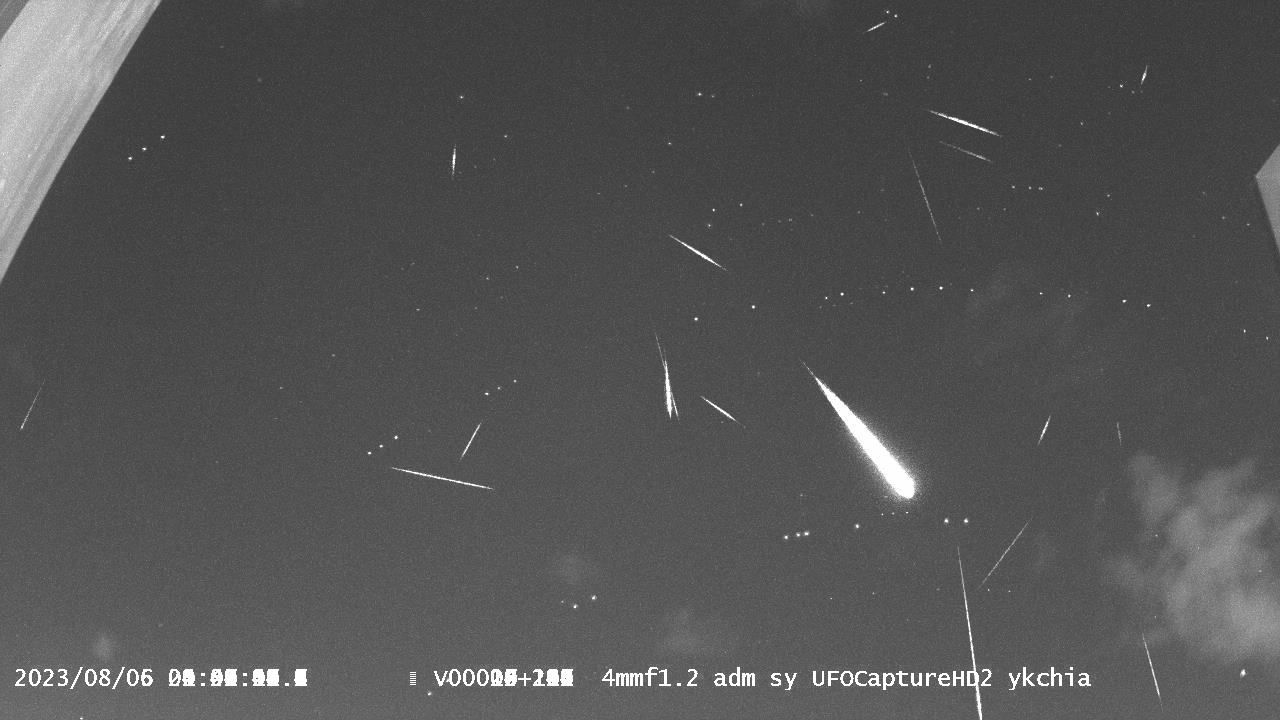 Image via Chia YK/Facebook.
Image via Chia YK/Facebook.
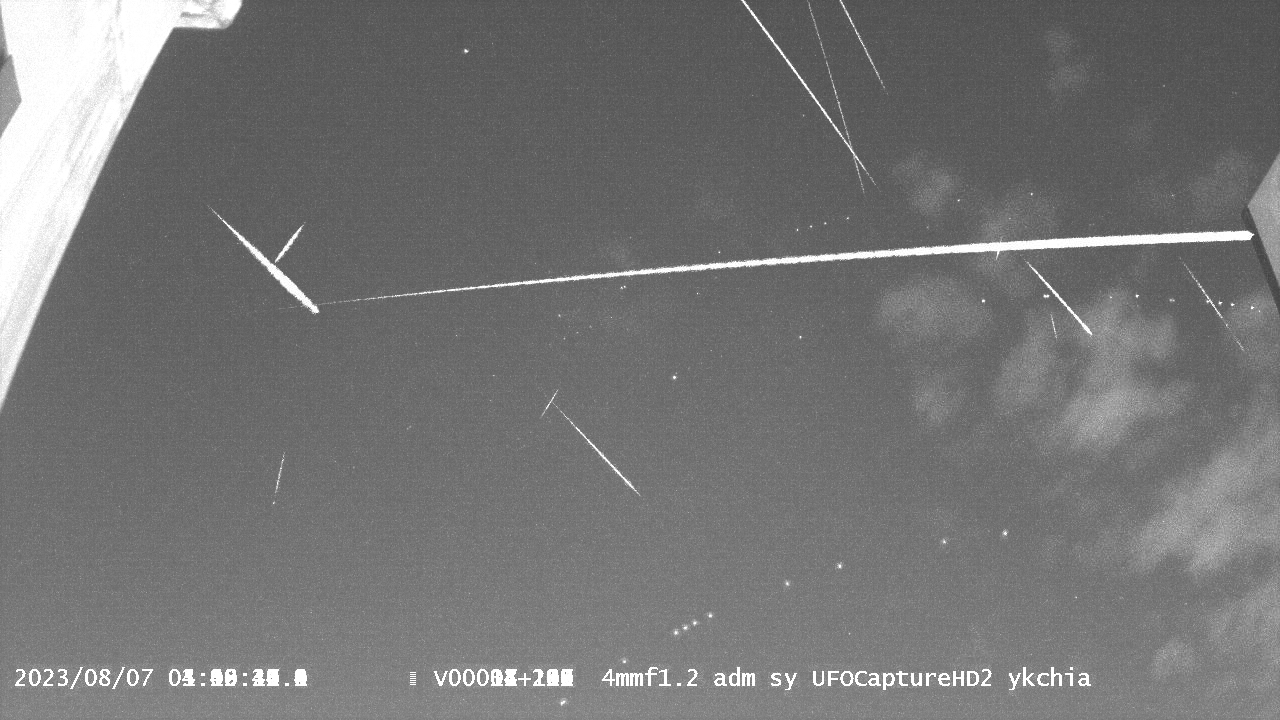 Image via Chia YK/Facebook.
Image via Chia YK/Facebook.
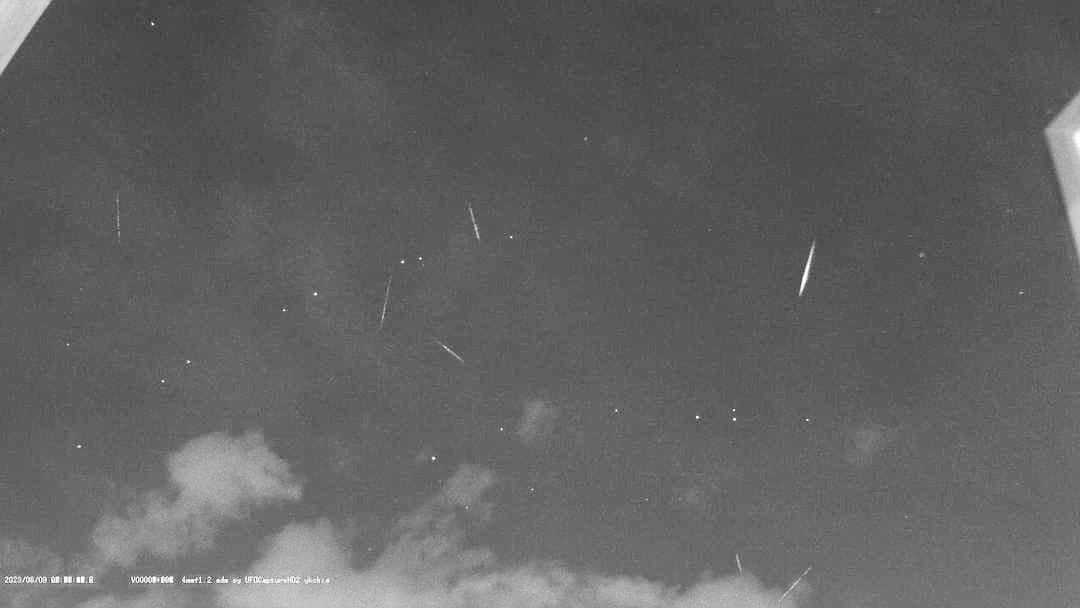 Image via Chia YK/Facebook.
Image via Chia YK/Facebook.
Impressed, curious, and with the supposed peak of the this year's Perseids coming up, I reached out to YK and asked if I could join him in the wee hours of Aug. 12.
"Just join in the fun," YK agreed swiftly.
Meeting YK
According to Stargazing Singapore, the best viewing times would fall between 4am and 6am.
At 1am on Aug. 12, I prepared to head over to YK's place, carrying a tinge of doubt with me that I will see any stars at all, let alone meteors.
YK prepared me for disappointment too, having told me over WhatsApp to manage my expectations.
While waiting for my Grab to arrive, I tried one last time to convince myself that the trip will be worth it by shifting my gaze upwards to the night sky.
Here's what I saw.
 Those specks of white are stars. Some editing was done on my iPhone to make them more visible. Photo by Gawain Pek.
Those specks of white are stars. Some editing was done on my iPhone to make them more visible. Photo by Gawain Pek.
Ok, maybe there's a chance this trip to the north would be worth it.
YK's place was on the 13th floor, which I later realised was the highest at his estate.
I walked down the long corridor, almost missing his unit if not for YK calling out to me. The elderly man greeted me and welcomed me into his home.
YK's name in full was Chia Yeon Kwong, and he is a 64-year-old retiree.
When I entered his home, the retiree was decked out in his jammies, looking comfortable and ready for bed. To be fair, 1:30am was bedtime, even by my standards.
He was all set up and ready to go though, with the viewing equipment already pointed at the night sky.
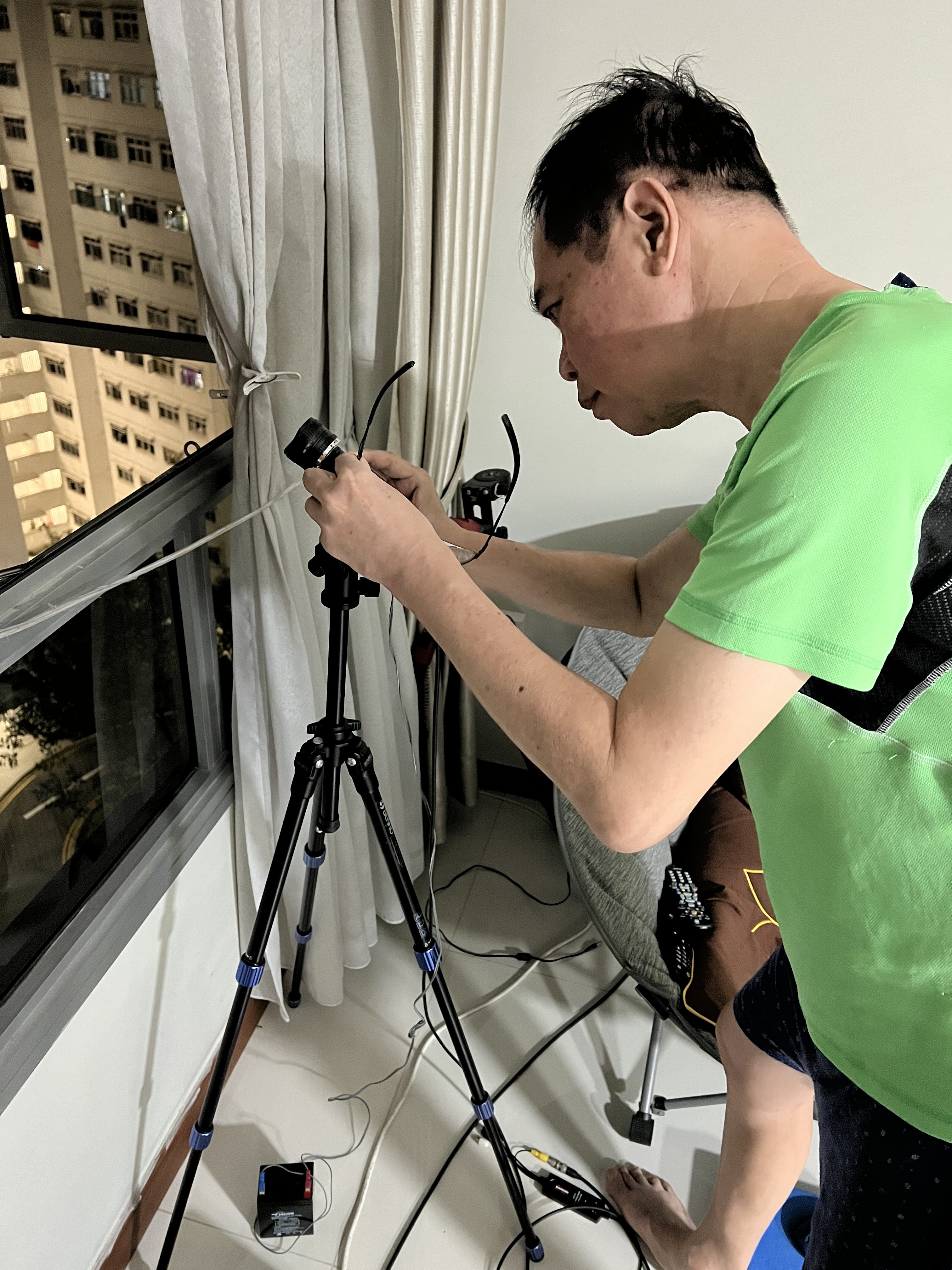 YK showing me one of his rigs. Photo by Gawain Pek.
YK showing me one of his rigs. Photo by Gawain Pek.
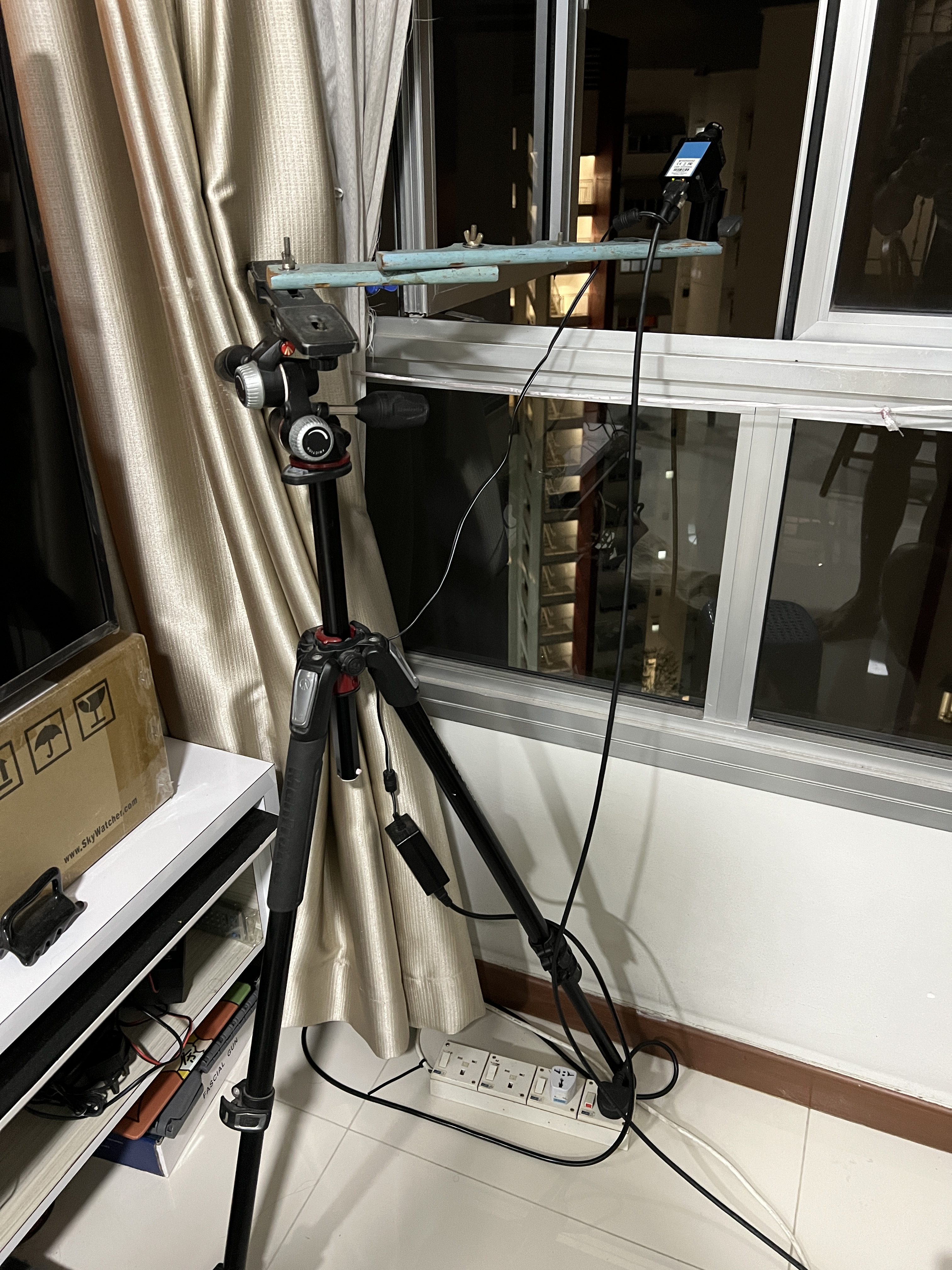 Photo by Gawain Pek.
Photo by Gawain Pek.
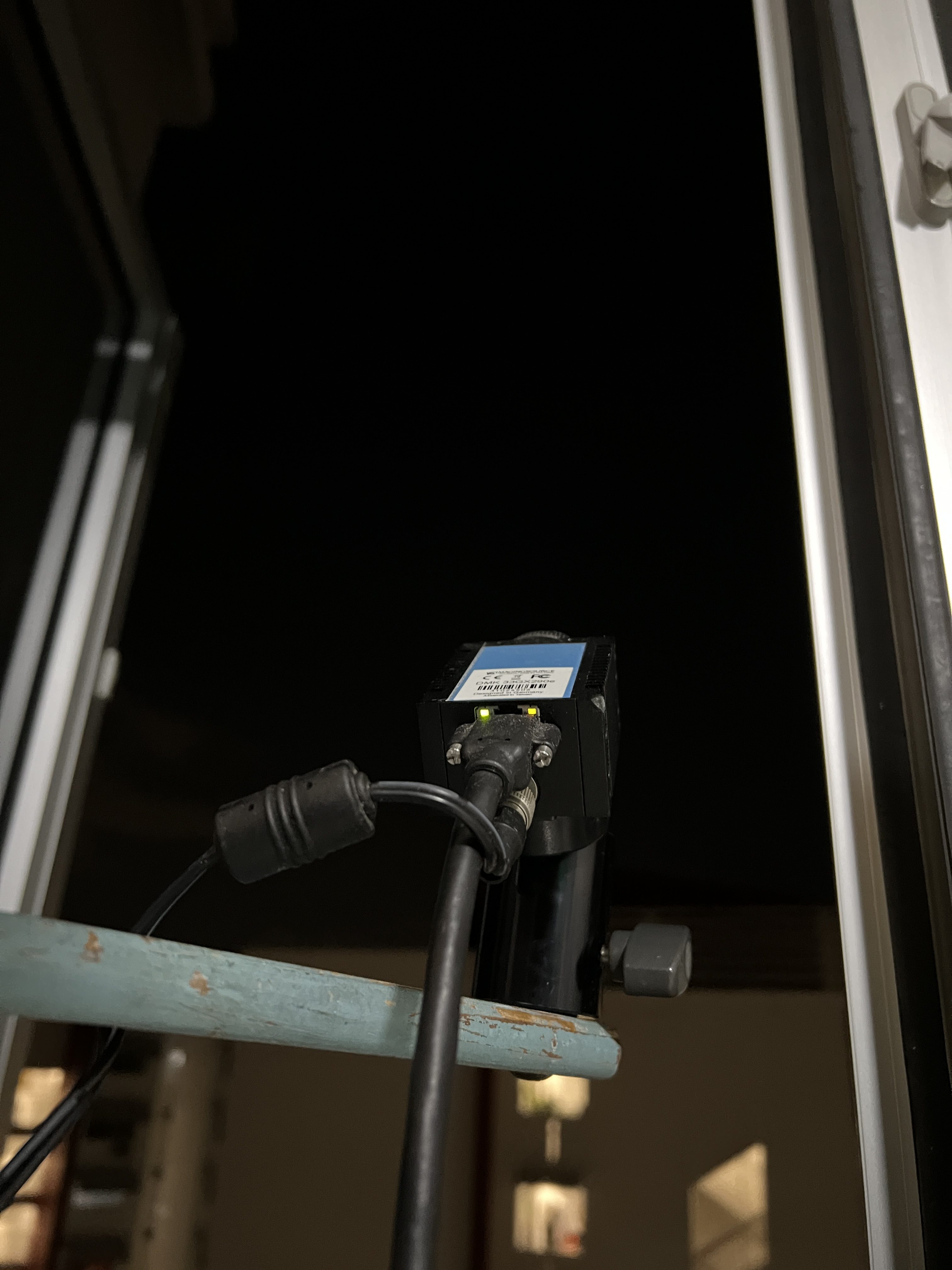 Photo by Gawain Pek.
Photo by Gawain Pek.
However, instead of having large telescopes pointed at the sky, YK's rigs were much smaller.
Telescopes are good for seeing planets, but not effective for viewing meteor showers owing to their narrow field of vision, YK explained.
How the set up works
The astrophotography veteran uses specialised cameras with a wider field of view, which he bought from a local company.
The cameras are also fitted with motion sensors, which are then hooked up to a computer running a purpose-built software made by a Japanese astrophotographer.
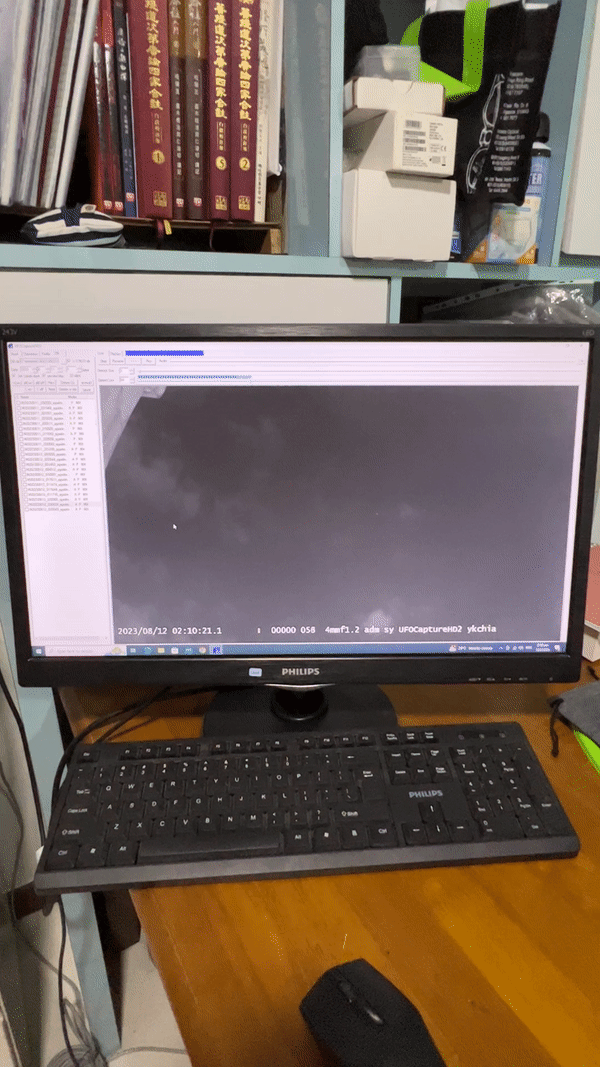 Photo by Gawain Pek.
Photo by Gawain Pek.
Each time motion was detected, the software will capture footage of the scene.
To demonstrate how the set up worked, YK waved his hands in front of one of his cameras. The live feed on the computer screen blinked, and a still photo was taken.
YK explained that the software would snap a still on the hour, and one each time motion is detected.
The software was programmed to be sensitive to shooting stars, meteors or fireballs but not the pesky clouds obscuring the celestial event.
Outside, the sky was neither pitch black nor dark blue. Instead, it was a kind of glowing grey.
There were patches of clouds floating by, but the sky was generally clear. A handful of stars struggled to shine against the luminescence of urban lights.
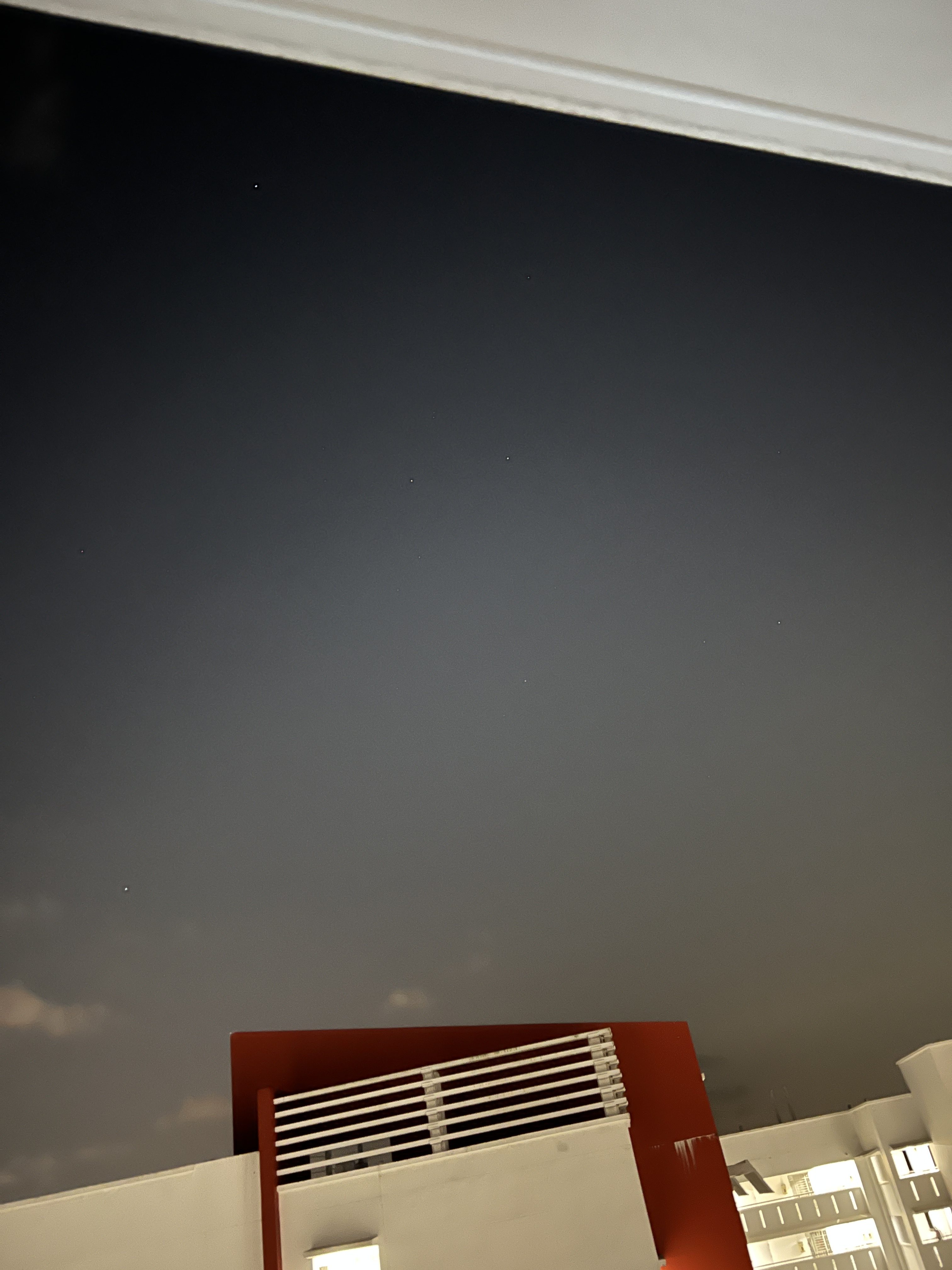 Photo by Gawain Pek.
Photo by Gawain Pek.
"Once in awhile, if I wake up to go toilet, then I'll come and check to see if everything's ok," YK said with a little skip in his voice.
Otherwise, the retiree does not stay up for the show.
"It is tiring to do that," he told me. It was by then almost 2am, and I felt bad for imposing after finally understanding that YK's process was largely automated and did not require him to stay up.
Still, YK was very much accommodating.
Occasionally, YK would set up a portable rig at the sky garden where there is much less ambient light.
Despite being tedious and something he does infrequently, YK readily agreed when I asked if he could show me how that was done.
The first one
Two hours away from the prime viewing hours for the night, nothing much was happening.
The clouds were still drifting and the stars were still straining against the light pollution.
YK patiently entertained the questions I had until our conversation was interrupted by a blink of the live feed. The hourly still shot was taken — nothing unusual.
Then, it blinked again.
"Why did it do that?" YK blurted.
Navigating to the gallery, YK clicked through the stills until he got to the latest one.
When he opened up the image, we were both surprised to see a meteor in frame.
 Photo by Gawain Pek.
Photo by Gawain Pek.
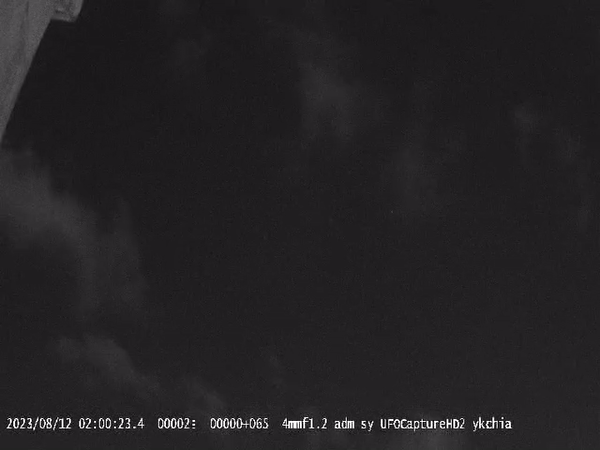 Video courtesy of Chia YK.
Video courtesy of Chia YK.
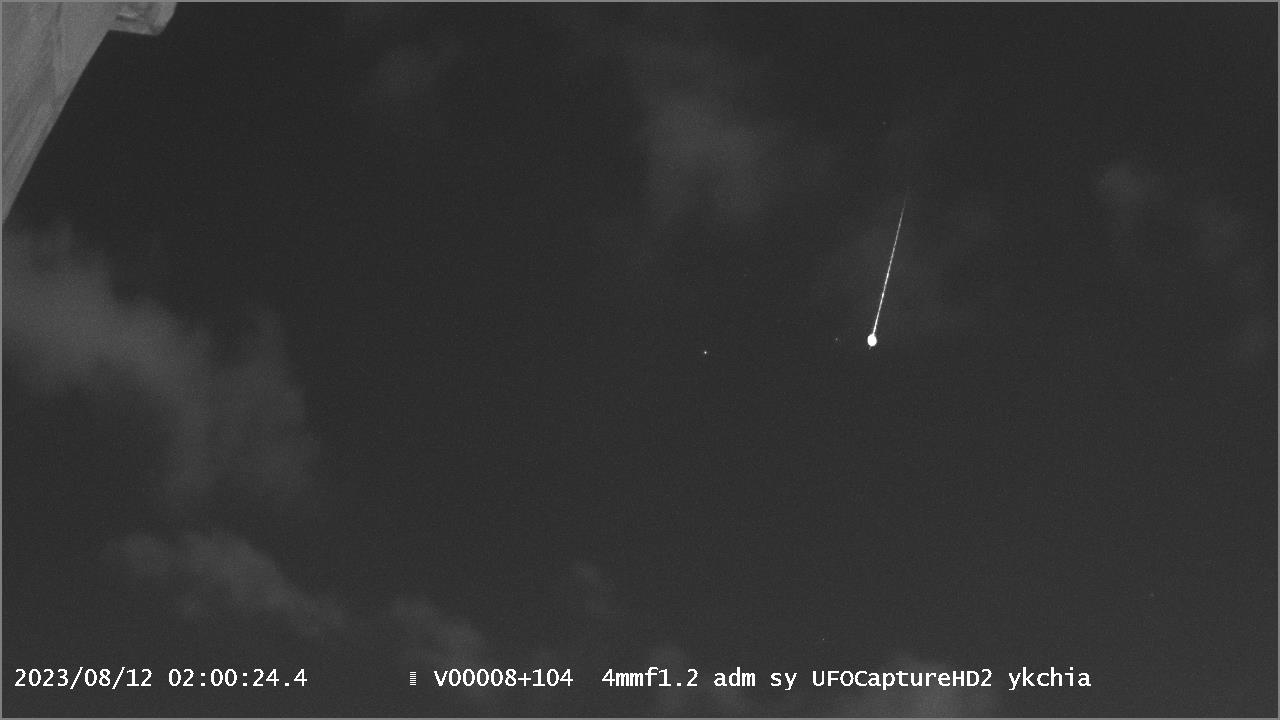 Image courtesy of Chia YK.
Image courtesy of Chia YK.
Technically, it was still early, so the appearance was rather unexpected.
Did I get excited? Just a teeny bit, since I did not see it with my own eyes. It did, however, add a little optimism that this trip might be fruitful.
Watching paint dry
We packed and headed to the sky garden, where YK set up his cameras, carefully pointing it at the patch of sky around Jupiter.
From the sky garden, we were looking at the north-eastern bit of the sky, while from his home it was the southern sky which was in view.
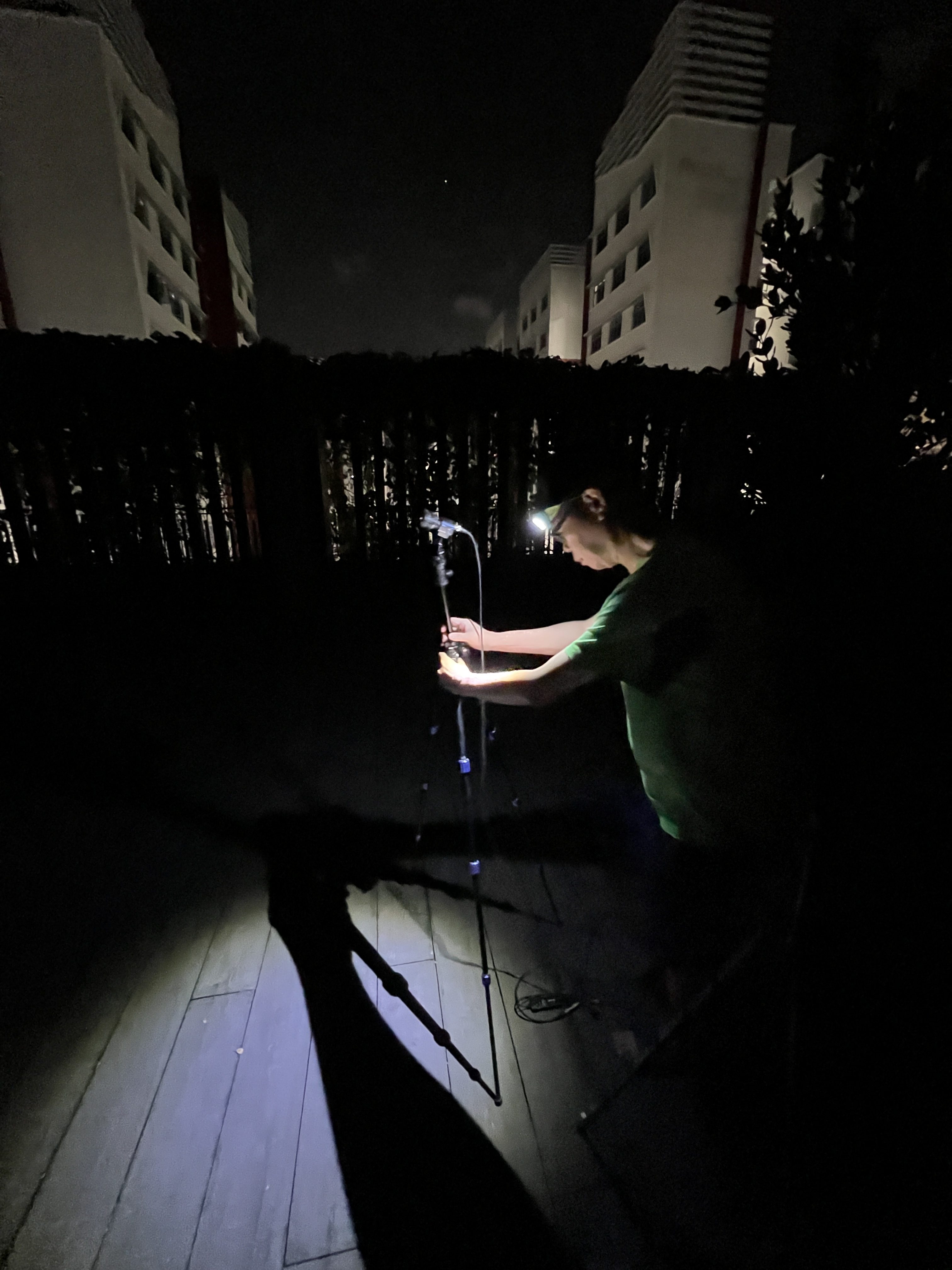 Photo by Gawain Pek.
Photo by Gawain Pek.
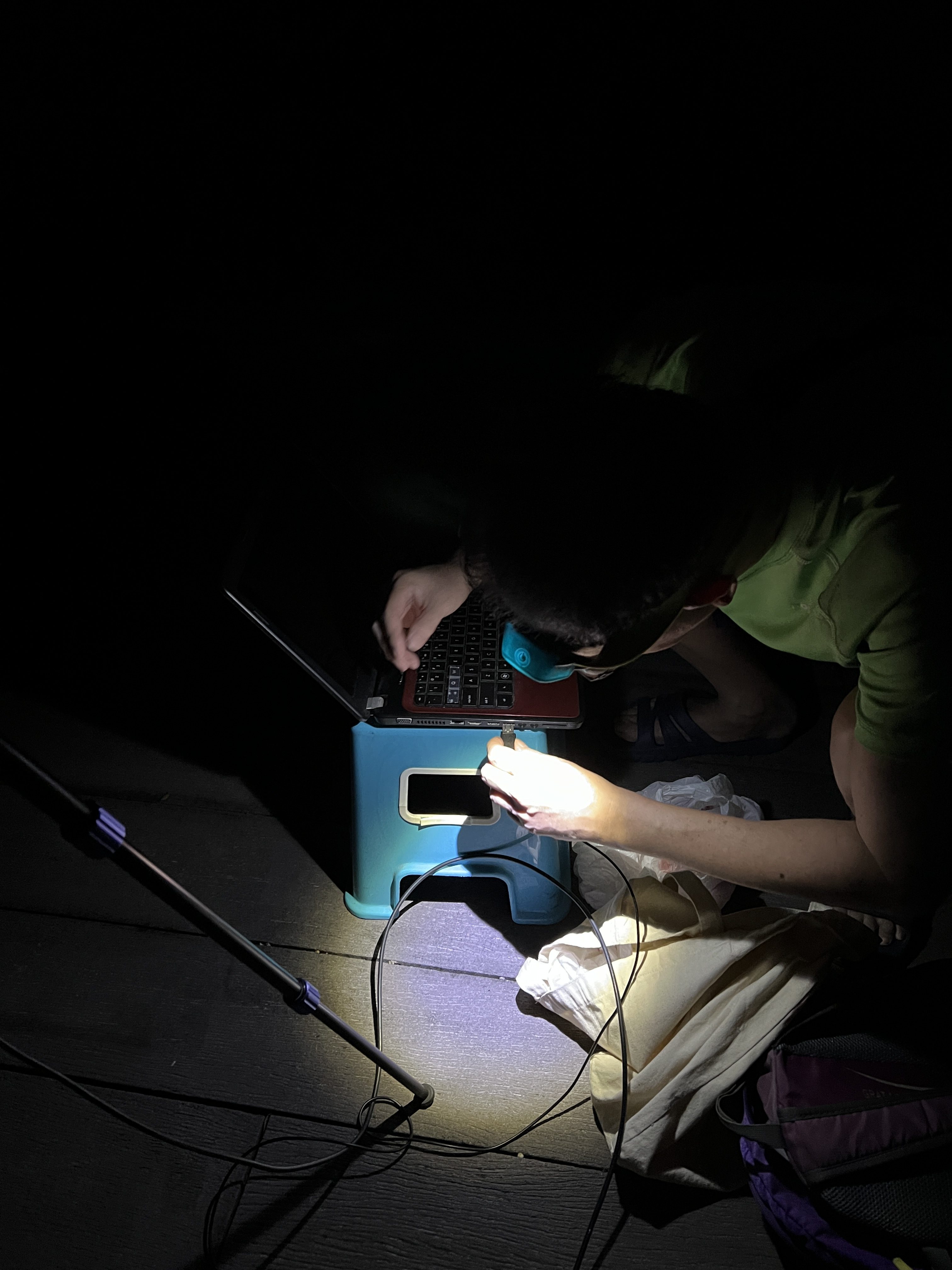 Photo by Gawain Pek.
Photo by Gawain Pek.
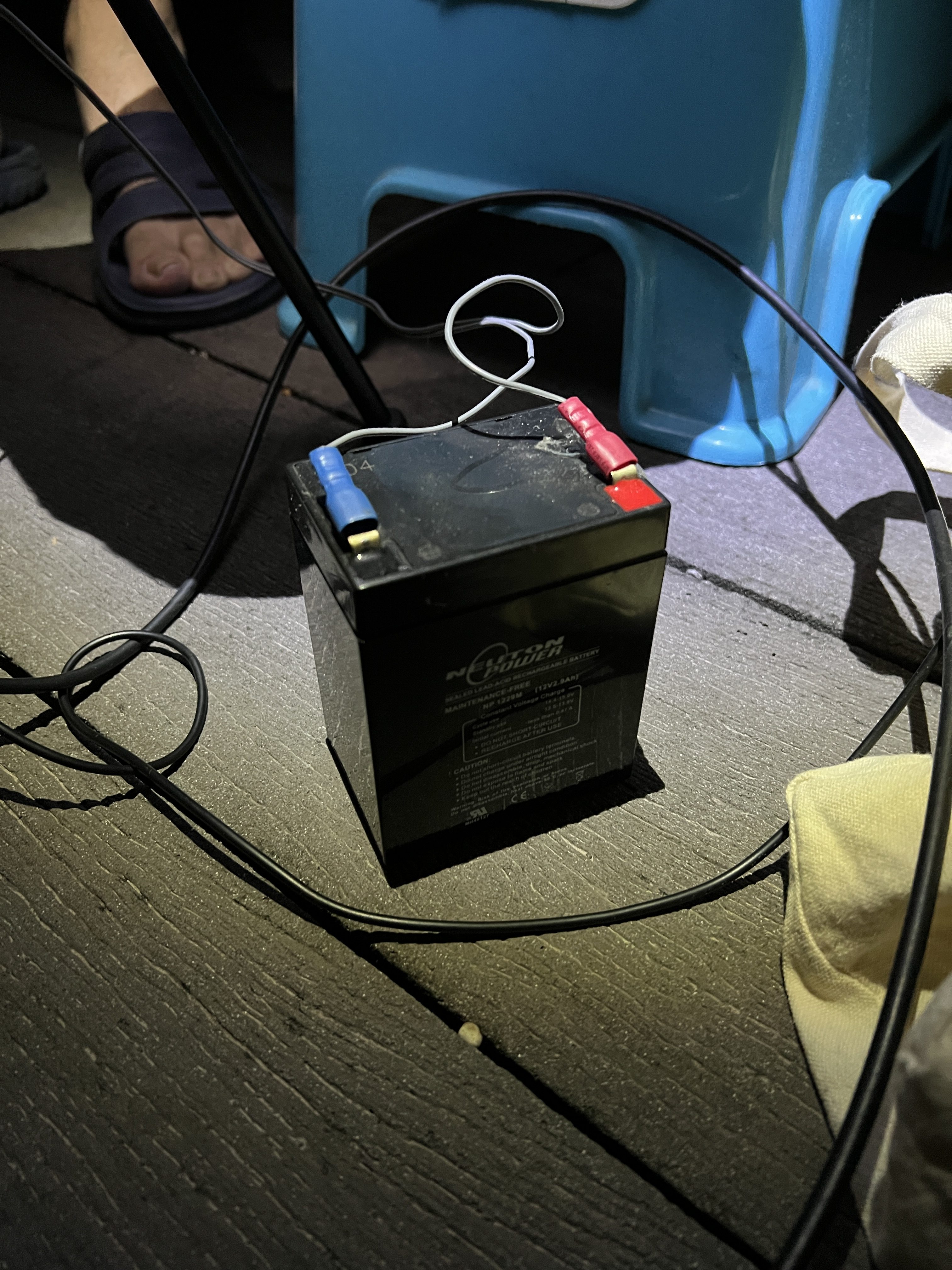 A portable battery to power the camera. Photo by Gawain Pek.
A portable battery to power the camera. Photo by Gawain Pek.
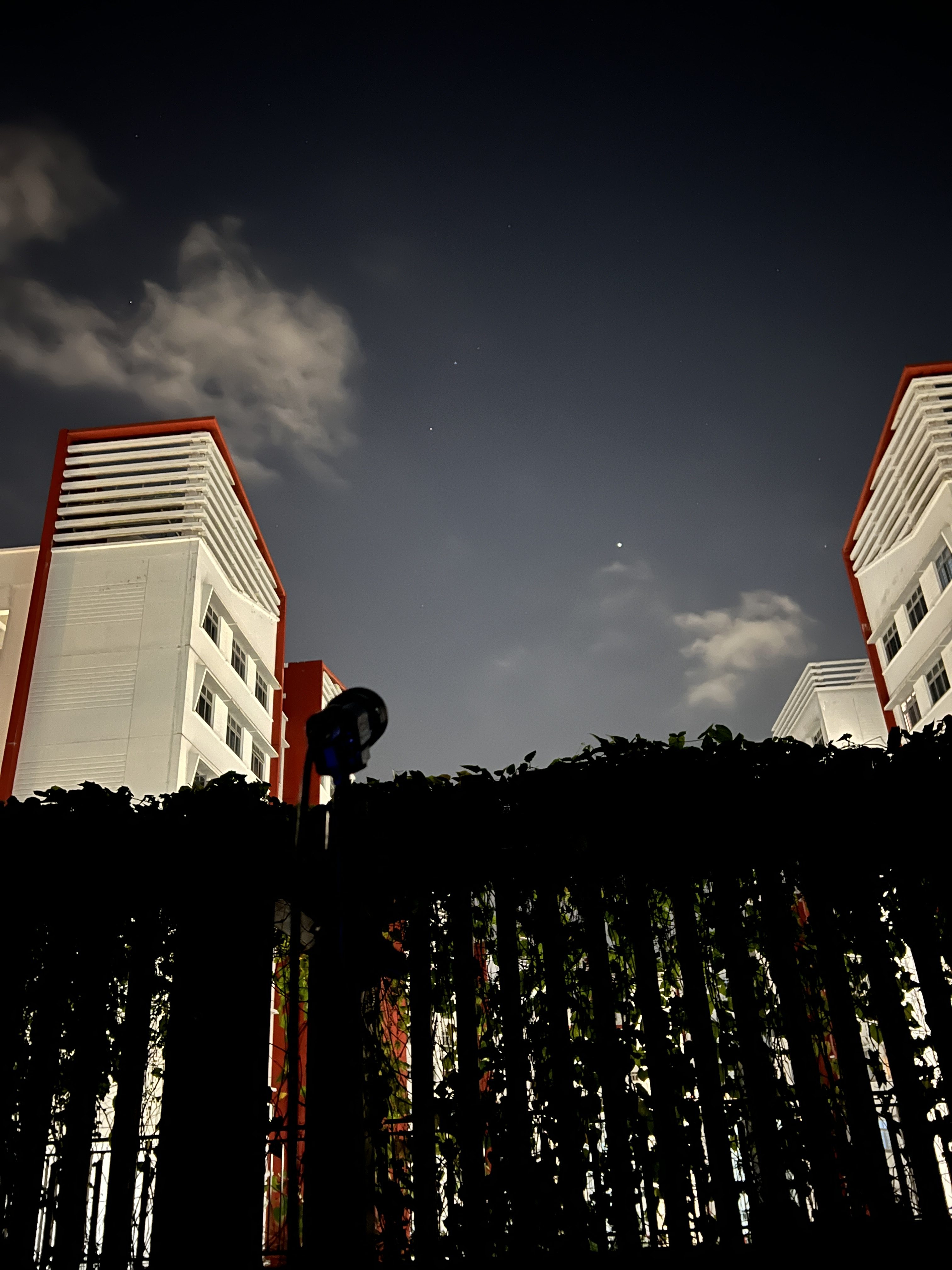 Photo by Gawain Pek.
Photo by Gawain Pek.
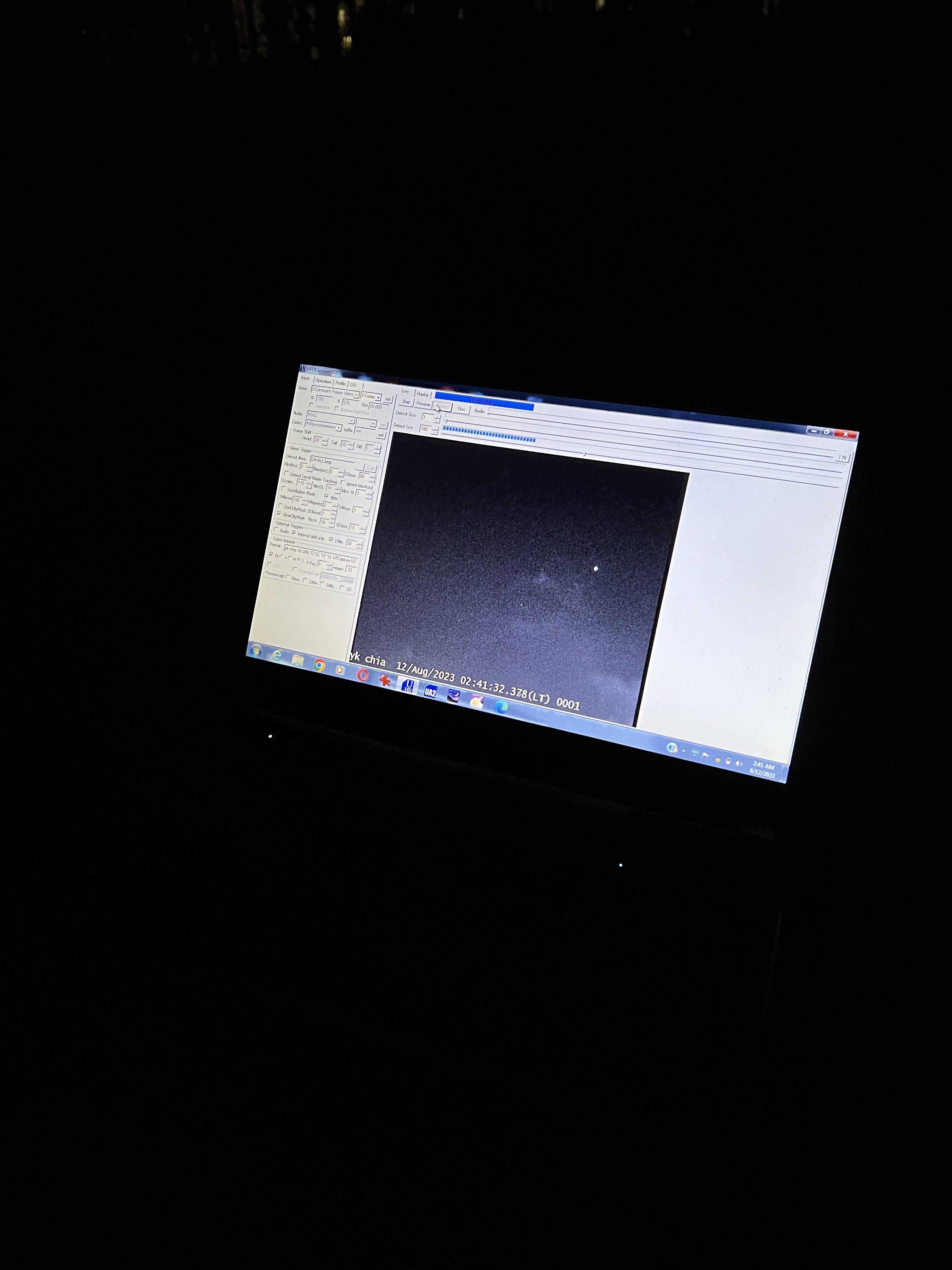 Photo by Gawain Pek.
Photo by Gawain Pek.
Along the way, he continued explaining to me the technicalities — where the northeastern sky was, what a radiant is, and how to know where to point the camera.
We left the equipment to do its thing and sat ourselves down on a nearby picnic bench.
For a better chance of seeing something, YK told me that it was best to lie down flat and look up. This way, a larger area of the night sky would be in your field of vision.
For the next hour or so, we stared up at the sky. To be frank, it was comparable to watching paint dry.
To entertain ourselves, YK started pointing out to me the constellations which were just slightly visible and explained how useful it was to be familiar with the star map.
Highlights of YK's astronomy journey
"So, how did you learn so much about astronomy?" I enquired, trying to keep the conversation going to keep us from falling asleep.
YK has years of experience under his belt. He began his foray into astrophotography some time around the turn of the century.
In his younger years, the 64-year-old was quite a hustler. He told me he would reach out to experts in countries like New Zealand, Finland and Germany to ask if he could go visit.
Through them, YK acquired knowledge about astronomy and made lifelong friends.
Two experiences served as highlights for his astrophotography journey – witnessing "storm level" Leonid meteor showers in Jordan and Korea.
YK recalled how, during those events, the entire sky was filled with meteors and fireballs, and some were so bright that they cast shadows on the ground in front of him.
"Nothing has beaten that so far," YK reminisced. Nothing impresses him anymore, especially not Perseids in Singapore with all the light pollution and cloud-laden skies.
In fact, he joked that Singapore is a terrible place to be in to choose to be an astrophile.
Yet, despite deplorable conditions and having experienced the peak of his meteor-spotting career, YK's passion continues burning.
He continues with astrophotography as a way of documentation and, through his composites, inspiring in others the same appreciation for meteors.
He told me that he creates composites to give viewers a "better grasp of distribution of the meteors' brightness". To me, they give an idea of what an actual meteor shower looks like, which is admittedly awe-inspiring.
The second one
As we conversed, we kept looking upwards at the night sky which left so much more to be desired. Our necks became like joints on a tripod that had been locked in position.
Out of the nowhere, a flash of white-blue light streaked across the night sky ephemerally in my peripheral vision.
I had seen shooting stars before, but this was very much different. It was bigger, brighter and had colours.
By the time my brain got my mouth to utter the words telling YK that I saw something, the celestial body was long gone.
YK, who was looking at a different part of the night sky, had obviously missed it.
Honestly, I felt somewhat guilty. After all, YK had stayed up to accommodate me and painstakingly walked me through his astrophotography process.
Yet, when YK asked about what I saw, I sensed elation in his voice. He later told me that he messaged his wife to share with her that I managed to catch sight of a meteor.
She, in turn, relayed her joy.
For me, I was stoked to have seen the meteor, but it was so fleeting that it honestly did not leave much of an impression.
The rest of the morning went on uneventfully as my beginner's luck seemingly came and went with that one meteor.
At 4am, when the peak of the peak was supposed to take place, there was no rapid successions of meteors raining across the sky.
Instead, the sky glowed on bleakly, and small patches of cloud drifted across it boringly.
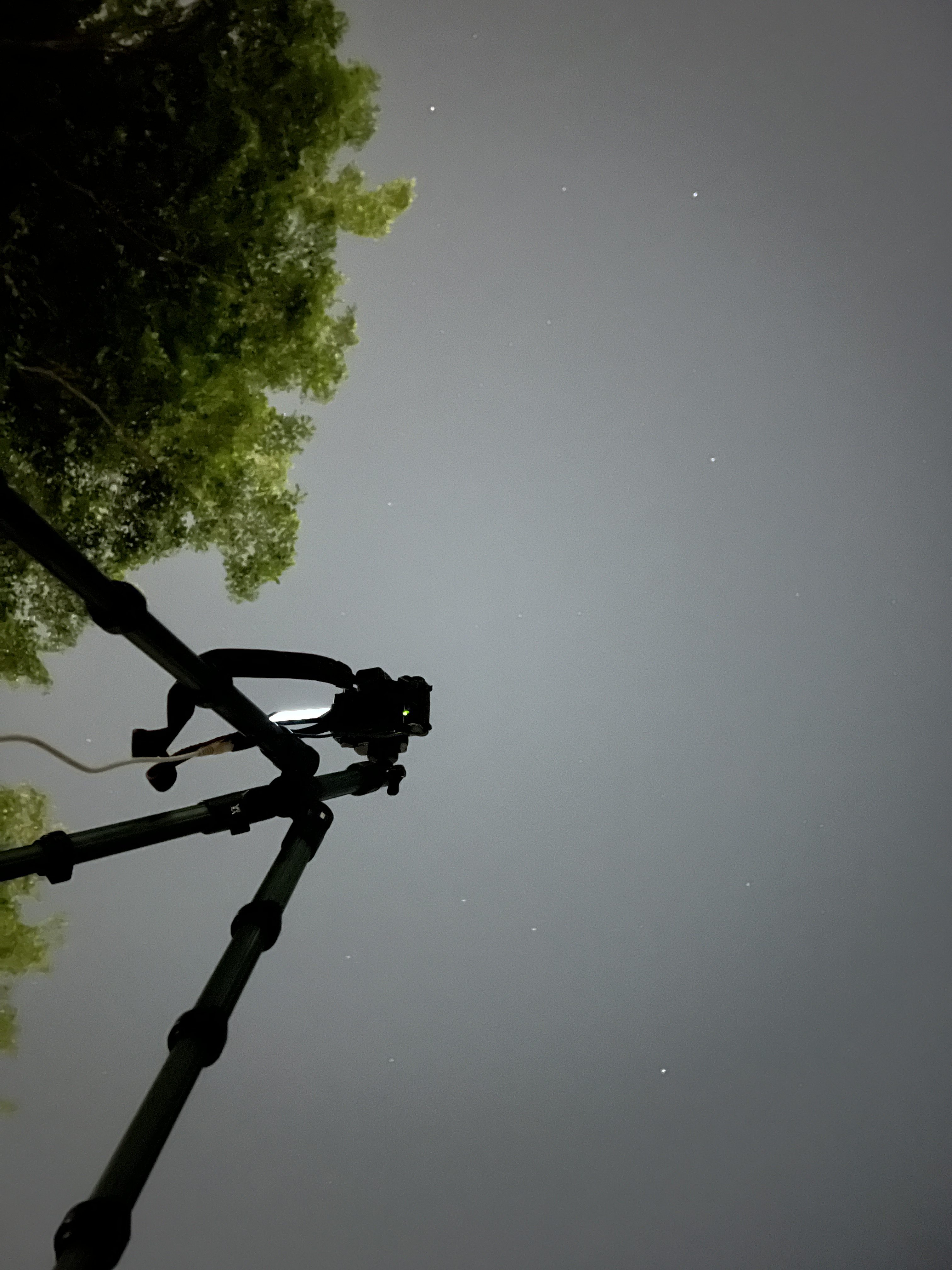 Photo by Gawain Pek.
Photo by Gawain Pek.
"4am. Peak. Big deal!" YK quipped boisterously before letting out a laugh.
Around 4:30am, we were both zombified by the lack of sleep and decided it was time to wrap up.
Back in his unit, we checked the cameras left in his home and found that no other meteor was captured apart from the one we saw earlier on at 2am.
Decent cloud conditions, but not much luck.
I found contentment in the one meteor (two, if you count the one from the still image) that I saw, thanked YK for the company and went home to the comfort of my bed.
Is it worth it to stay up for meteors in Singapore?
For the three hours that I spent fighting my heavy eyelids, I bore witness to a grand total of one meteor with my own eyes.
With that scoreline, I would say that there are better places in the world to stargaze or catch a meteor shower.
For example, you could take a bus or drive up to Mersing in Malaysia, which YK told me is where astronomy interest groups frequent.
It was, however, rather therapeutic to just do nothing, stare at the sky and listen to YK's stories.
The companionship and the chance to get to know YK made it worthwhile.
So, when the next meteor shower comes around in December and you are looking for something to do with your friends or partner, consider staring at the sky and doing nothing at an open field.
Top photos by Gawain Pek and Chia YK
If you like what you read, follow us on Facebook, Instagram, Twitter and Telegram to get the latest updates.

